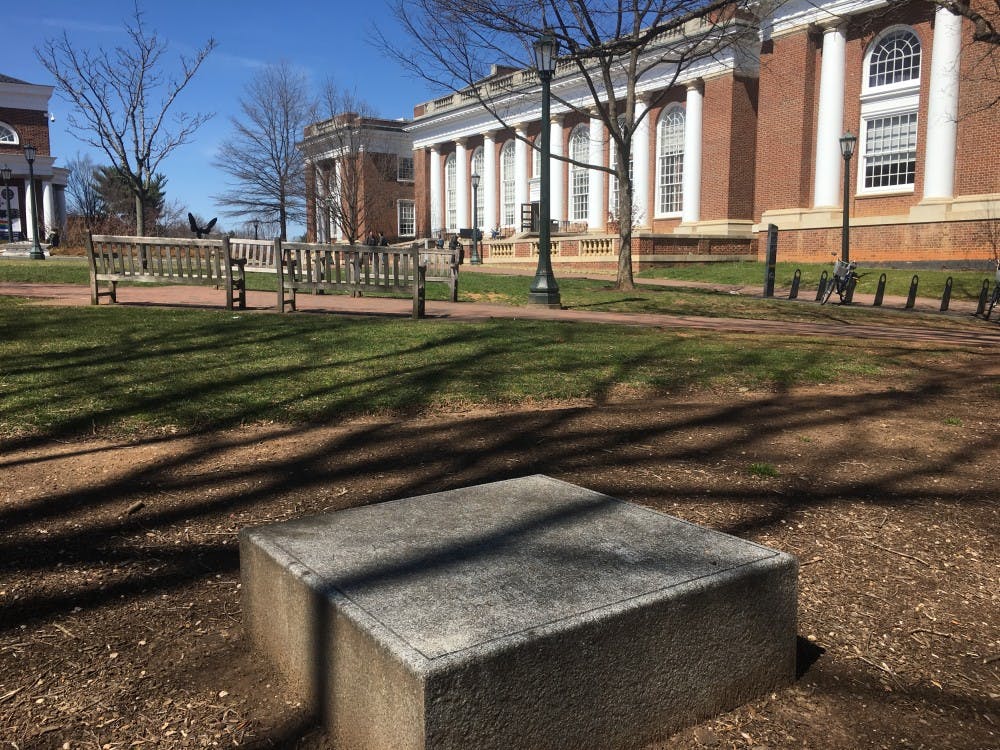The memorial to the University’s anatomical theater is easily small enough to walk right past without noticing. In fact, I’m almost certain that every student at this school has walked past it without noticing. A few feet away from the Berlin Wall outside of Alderman Library there’s a low cement block crouched in the mulch. It’s inconspicuous enough to stub a toe on. It reads simply, “On this site stood the first building devoted solely to medical instruction at the University of Virginia.”
Despite its humble memorial, the anatomical theater has a fascinating history. The theater was built in 1826 at the behest of Robley Dunglison, whom Thomas Jefferson had just hired to be the first full-time professor of medicine in the United States. Dunglison felt the pavilions, which Jefferson had designed with little regard for the interior, were insufficient for dissecting cadavers. The Board of Visitors agreed to construct a special medical building, and the anatomical theater was ready for operation by the beginning of the University’s third school year. The top floor was an octagonal operating theater with tiered seats, where students could sit and watch surgeries or dissections performed.
Dunglison filled his building with amputated body parts and preserved organs for his medical students to examine. Some of the organs were shipped from overseas. Students also learned by examining and dissecting cadavers, and eventually the anatomical theater became so full of body parts and dead people that a separate building was required. A one story-brick building was built behind the theater to house cadavers, nicknamed “Stiff Hall” by the students.
An enslaved laborer named Lewis was assigned to the anatomical theater — an unusual post for an enslaved person. The students mocked him with the nickname “Anatomical Lewis.” Records about enslaved laborers at the University in the 19th century are sparse — Lewis is one of the few people whose name and position are preserved.
The anatomical theater was demolished in 1939 to make room for Alderman Library, and remains the only building designed by Jefferson that is no longer standing. But it’s easy to picture where the building sat, thanks to the modest cement block outside Alderman. The sunny quad was once home to a squat brick building full of detached limbs and dead bodies, staffed by enslaved laborers.
It’s been said before but it bears repeating — history is what gives the University its texture. I’m not talking about the things they say in the admissions office — everyone knows all about Jefferson, and no one cares at all about the Seven Society. The University’s history is a story of oppression and injustice. Even in its modern form, the school and its community have much to answer for. Grappling with the past is the central challenge facing the University, and the depth and breadth of the past here makes the place fascinating and exciting.
But studying the history of the University doesn’t always have to be a dour exercise in self-rebuke. The joy of history comes from doing detective work, and as the anatomical theater plaque shows, at the University there’s always more to notice and more to uncover. The routines of modernity take up lots of time and energy, but the little bricks, only visible with wide open eyes, help imbue this place with its electrifying mystery and energy.







